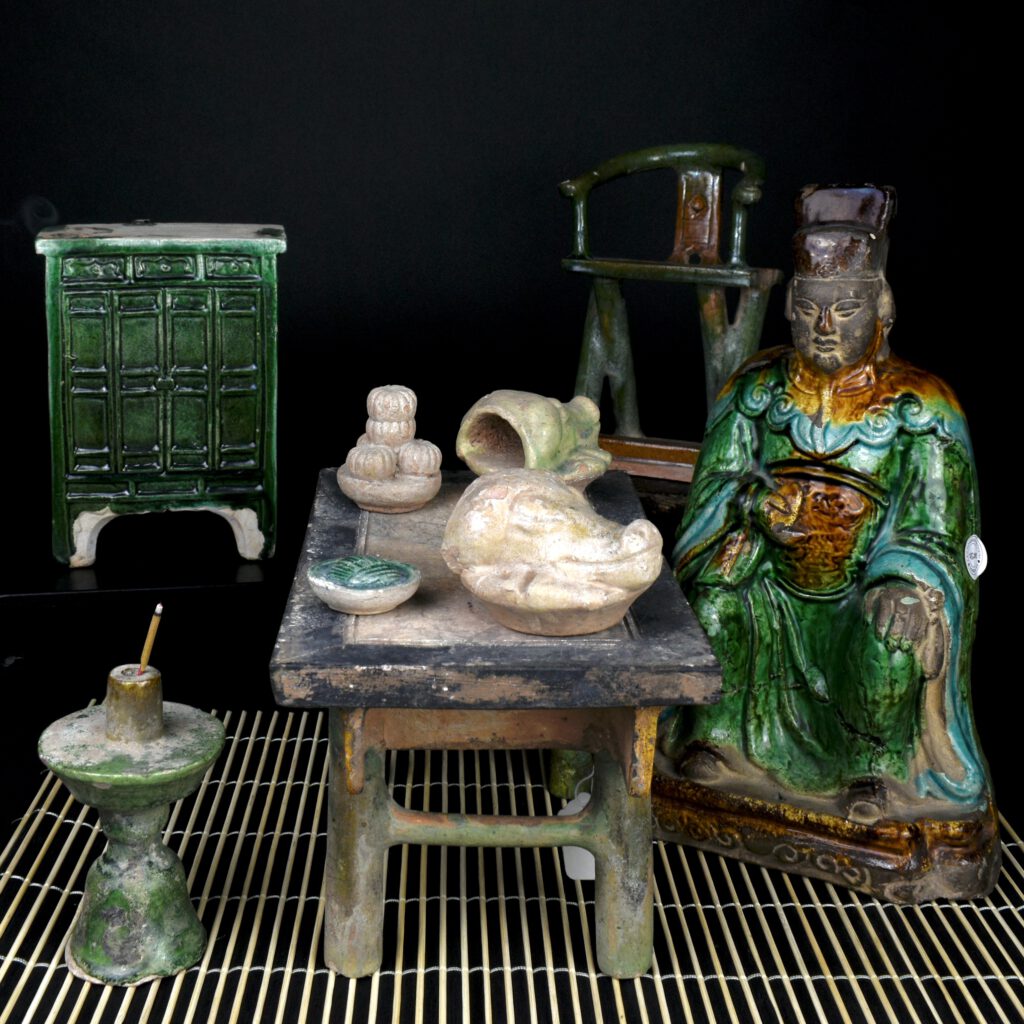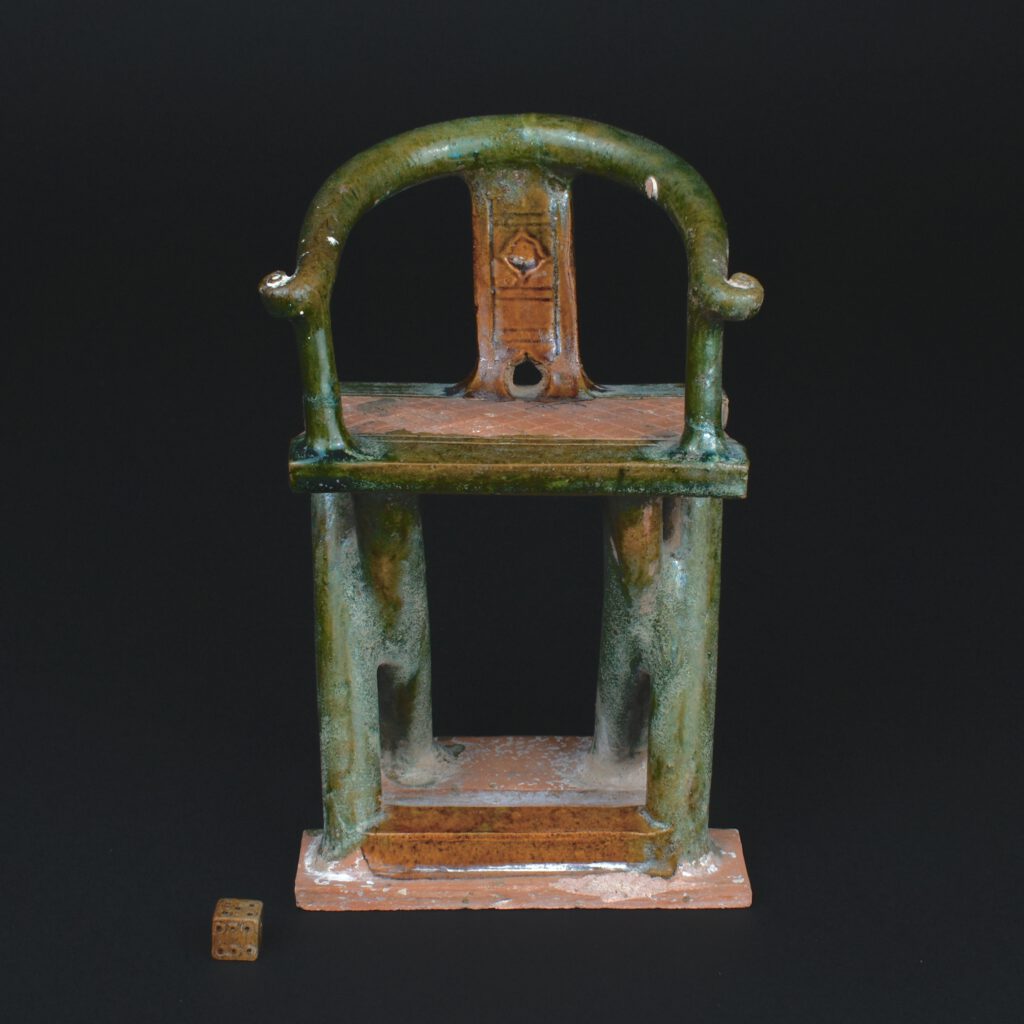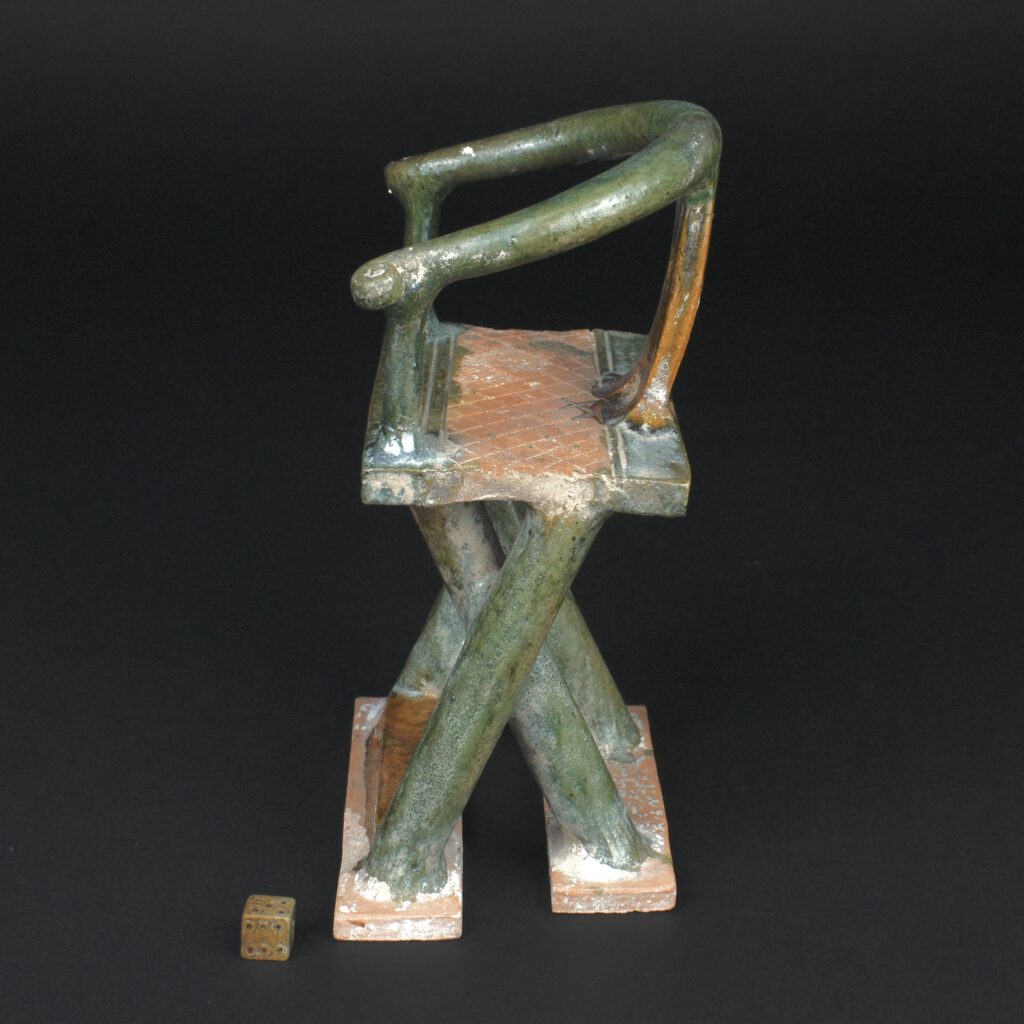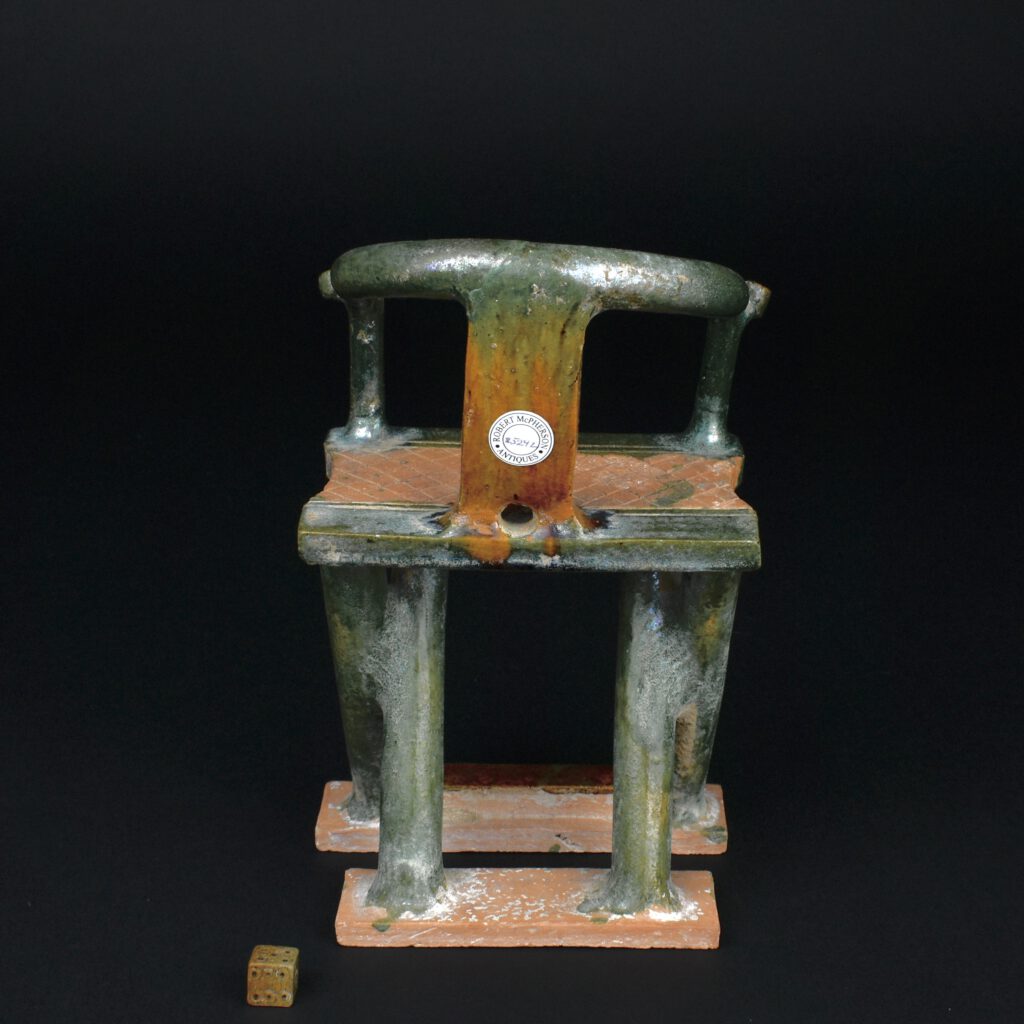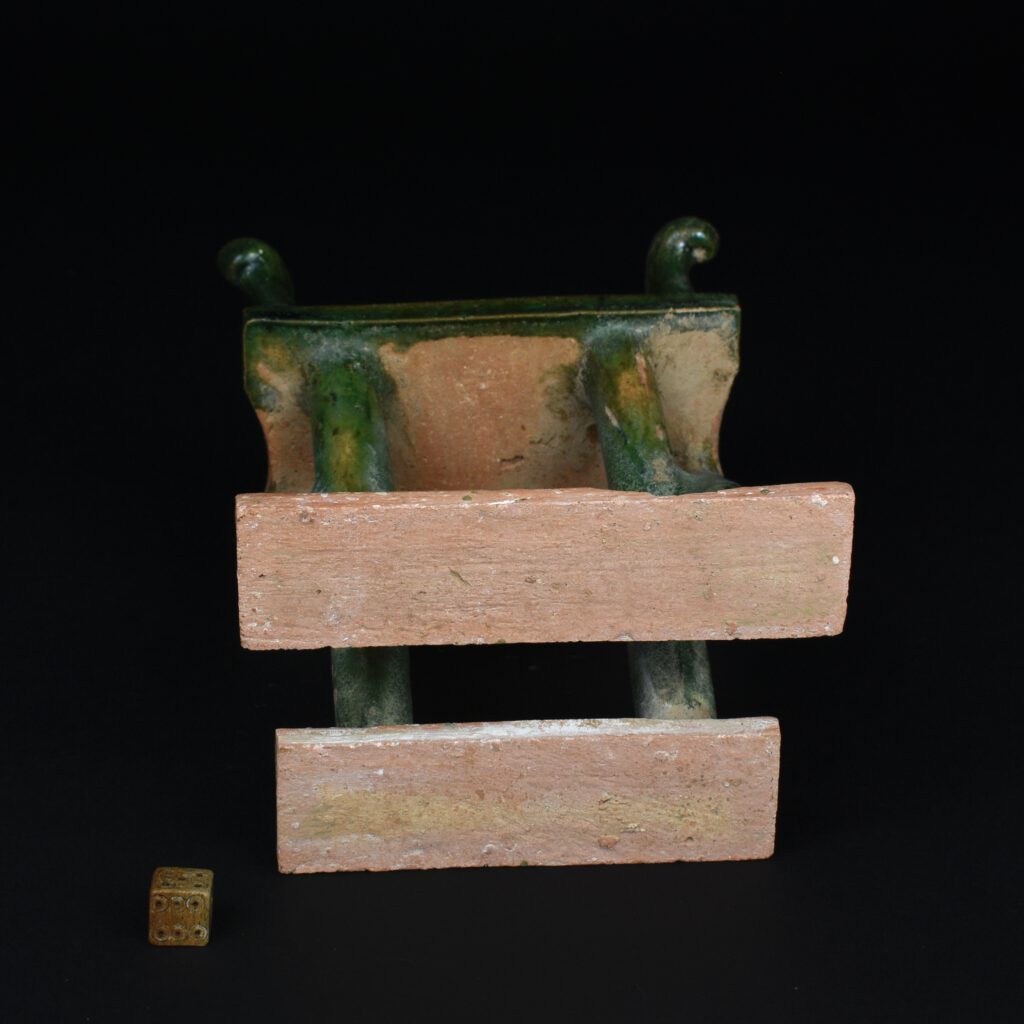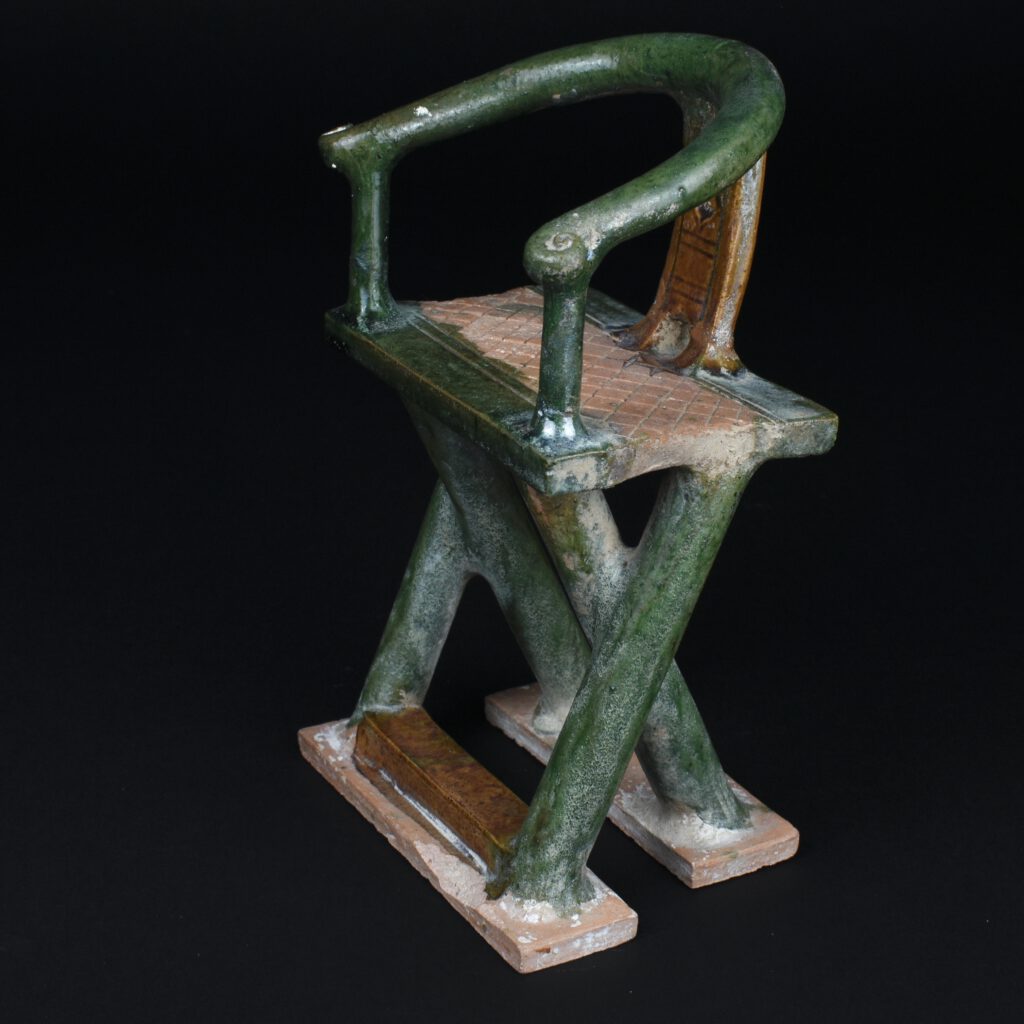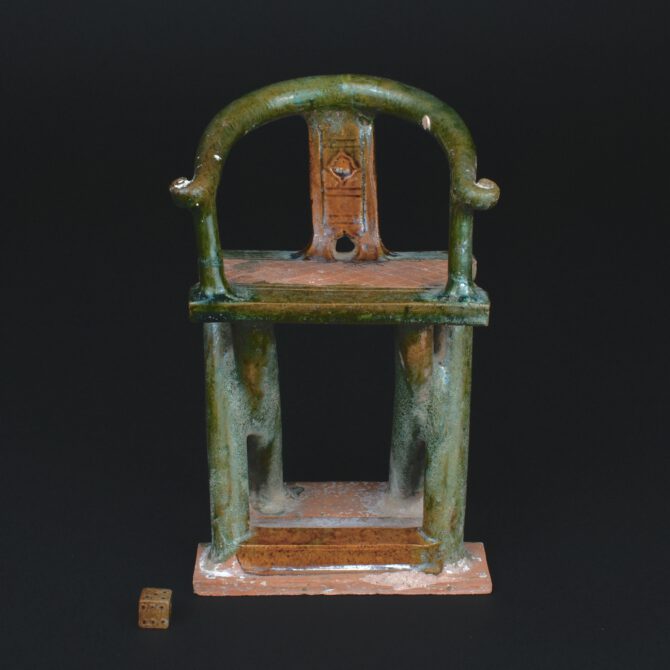
A 16th Century Ming Pottery Model of a Folding Horseshoe-Back Chair
A 16th Century Ming Pottery Horseshoe – Back Chair , North China c.1550-1600. This Ming pottery model is based on a now very rare object, a folding horseshoe-back arm chair, jiao yi. For an example of this type of Ming chair see below the photograph gallery. This piece is an example of Mingqi, objects made specifically for burial, to be taken with you to the afterlife. The `Terracotta Army` is the most famous example of this type of burial object. Mingqi objects represented people, houses, farms, granaries, livestock and indeed anything important from this world that would give you comfort and status in the next. The `Terracotta Army` were made life size and on a vast scale, reflecting the importance of the first emperor of China but most Mingqi objects were small models, far smaller than the object or indeed person they were meant to represent. Mingqi ceramics were not the only goods to appear in early Chinese tombs, objects that functioned were also buried, some of these had clearly been worn or even damaged, presumably these objects were prized possessions belonging to the deceased that might have been used on a daily basis.
SOLD
- Condition
- The top of the chair has been repaired. Nothing is missing but the whole top has been off, both of the slender upright supports and the back splat have been re-stuck. (the back splat been re-stuck at the top and through the two lower supports). A chip to the base at the front.
- Size
- Height 20.5 cm (8 1/4 inches).
- Provenance
- From a Private English Collection
- Stock number
- 25292
- References
- A Similar Ming Pottery Chair at the British Museum, purchased from George Eumorfopoulos in 1937. See : Catalogue of Late Yuan and Ming Ceramics in the British Museum (Jessica Harrison-Hall.The British Museum Press, 2001. ISBN 0-7141-1488-X.) page 552, items 20:8. A related Ming pottery table with offerings purchased by the Victoria and Albert Museum in 1996 from Robert McPherson Antiques. It is on display at the Victoria and Albert Museum in London, it can be seen in the China Gallery on the ground floor of the Museum in the T.T. Tsui Gallery.
Information
A Similar Ming Pottery Chair at the British Museum.
Purchased from George Eumorfopoulos in 1937.
Harrison-Hall 2001:
Related models of folding armchairs made in metal, stone and wood have been excavated from middle and late Ming tombs. Such chairs appear frequently to have been placed in Ming
tombs belonging to members of the aristocracy and scholarly elite. Two models of folding armchairs, one of bronze and one of tin were excavated in the Ding Ling, the tomb of the Wanli emperor (1573-1619). Another similar model of a folding armchair with a textile covering, carved from stone, was excavated from a tomb at Tongliang county, Sichuan. This tomb belonged to Chen Pingzhou, who died in the first year of Wanli (1573); the stone chair was discovered with a small rectangular table laden with an assortment of model food dishes, which suggests that folding armchairs were used for dining. We know from woodblock-print illustrations that they were used by scholars when seated at their desks. Such chairs were commonly used as appropriate seats for important people. They were also used for travelling, and perhaps in the context of burial this was most important as the tomb occupant journeyed about the spirit world.
As Clunas has pointed out, folding chairs were sufficiently familiar in the Ming period to be the sole type of chair included in an illustrated child's primer of objects of daily life, first published in 1436 and reprinted throughout the dynasty. Full-size folding armchairs made of 'huang huali' wood, with brass mounts and cane seats, also dating to the sixteenth century survive in the Nelson-Atkins Museum of Art, Kansas, and the Museum of Fine Arts, Boston, USA. Such chairs were not an innovation of the Ming era: similar chairs were already in use by the tenth century.
A green-glazed folding chair model comparable to the present piece is in the Burrell Collection, Glasgow.
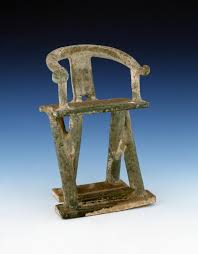
A Very Rare Ming Folding Horseshoe - Back Chair.
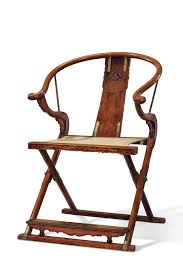
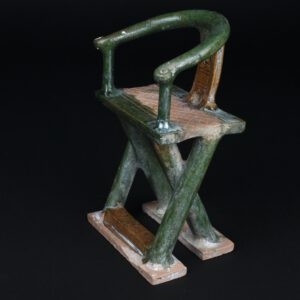
Related Ming Pottery
A Ming Table in the Victoria and Albert Museum
Purchased from Robert McPherson Antiques in 1996
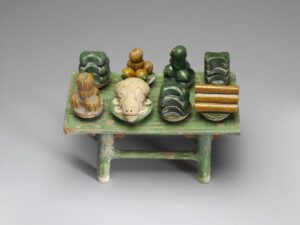
| BRIEF DESCRIPTION | 16th century Ming dynasty model of an altar table with eight little dishes of food (cakes, fruit and meat) neatly arranged in rows on it. |
| PHYSICAL DESCRIPTION | Earthenware model, with lead glazes, of an altar table with eight dishes of food on it. |
| DIMENSIONS |
|
| STYLE | Ming |
| GALLERY LABEL | Altar table with food dishes Ming dynasty 1550-1650 Earthenware with coloured glazes Museum no. FE.110-1996(2007) |
| OBJECT HISTORY | Bought from Robert McPherson |
| SUMMARY | Ming dynasty (1368-1644) funerary figures were intended to reflect the social status of the deceased. Ceramic replicas of servants, furniture and food are the most common types. The quantity of grave goods was closely related to the affluence of the deceased. The more wealthy the deceased the larger the number of funerary figures buried. |
Mingqi Pottery :
This piece is an example of Mingqi, objects made specifically for burial, to be taken with you to the afterlife. The `Terracotta Army` is the most famous example of this type of burial object. Mingqi objects represented people, houses, farms, granaries, livestock and indeed anything important from this world that would give you comfort and status in the next. The `Terracotta Army` were made life size and on a vast scale, reflecting the importance of the first emperor of China but most Mingqi objects were small models, far smaller than the object or indeed person they were meant to represent. Mingqi ceramics were not the only goods to appear in early Chinese tombs, objects that functioned were also buried, some of these had clearly been worn or even damaged, presumably these objects were prized possessions belonging to the deceased that might have been used on a daily basis.
